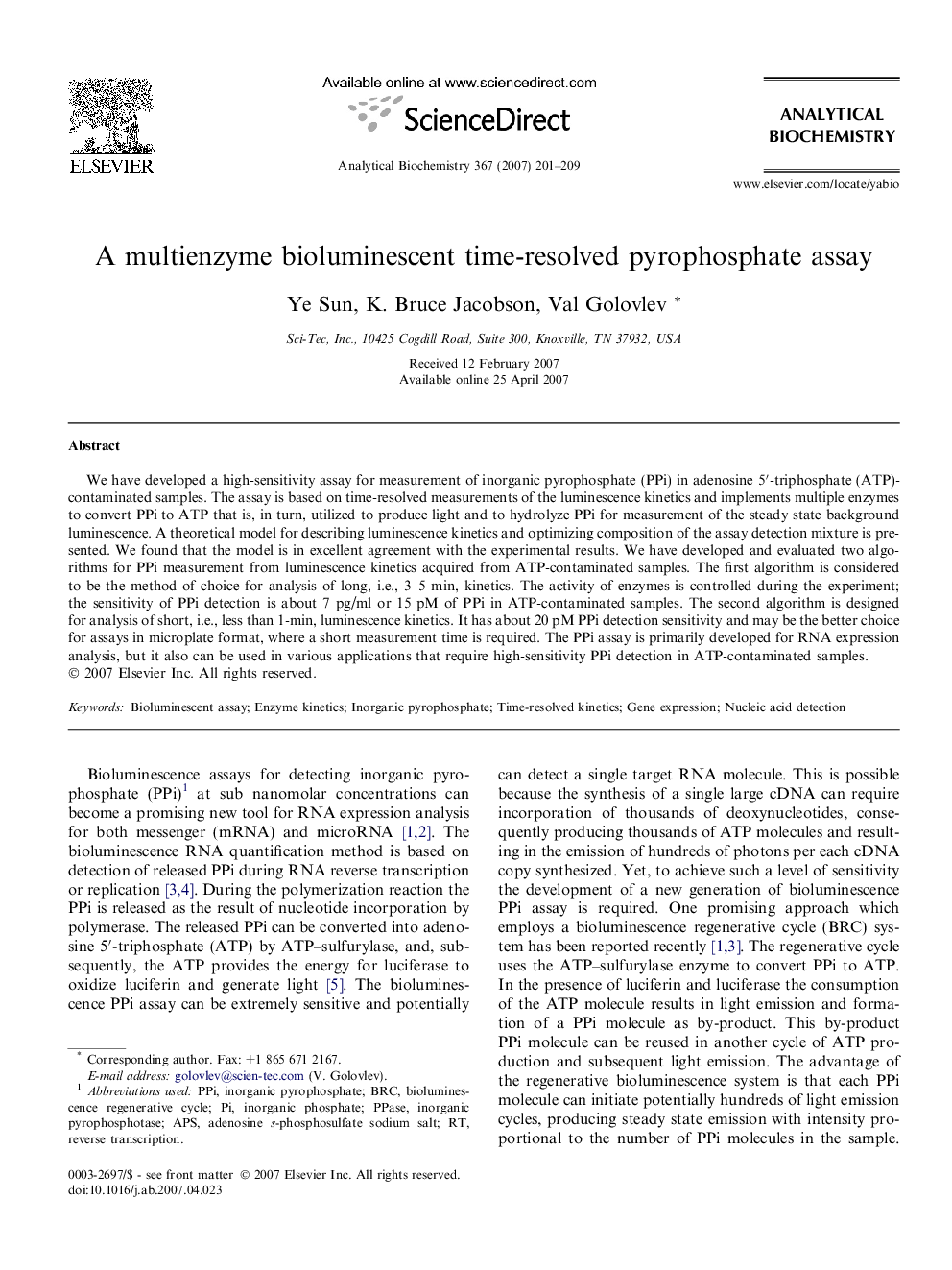| Article ID | Journal | Published Year | Pages | File Type |
|---|---|---|---|---|
| 1177335 | Analytical Biochemistry | 2007 | 9 Pages |
Abstract
We have developed a high-sensitivity assay for measurement of inorganic pyrophosphate (PPi) in adenosine 5â²-triphosphate (ATP)-contaminated samples. The assay is based on time-resolved measurements of the luminescence kinetics and implements multiple enzymes to convert PPi to ATP that is, in turn, utilized to produce light and to hydrolyze PPi for measurement of the steady state background luminescence. A theoretical model for describing luminescence kinetics and optimizing composition of the assay detection mixture is presented. We found that the model is in excellent agreement with the experimental results. We have developed and evaluated two algorithms for PPi measurement from luminescence kinetics acquired from ATP-contaminated samples. The first algorithm is considered to be the method of choice for analysis of long, i.e., 3-5Â min, kinetics. The activity of enzymes is controlled during the experiment; the sensitivity of PPi detection is about 7 pg/ml or 15 pM of PPi in ATP-contaminated samples. The second algorithm is designed for analysis of short, i.e., less than 1-min, luminescence kinetics. It has about 20 pM PPi detection sensitivity and may be the better choice for assays in microplate format, where a short measurement time is required. The PPi assay is primarily developed for RNA expression analysis, but it also can be used in various applications that require high-sensitivity PPi detection in ATP-contaminated samples.
Keywords
Related Topics
Physical Sciences and Engineering
Chemistry
Analytical Chemistry
Authors
Ye Sun, K. Bruce Jacobson, Val Golovlev,
